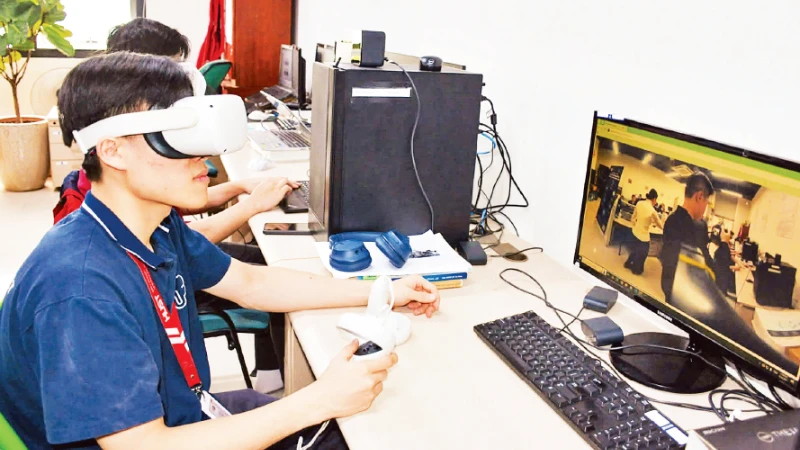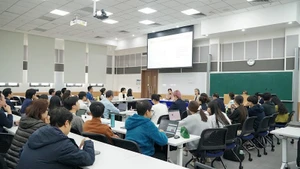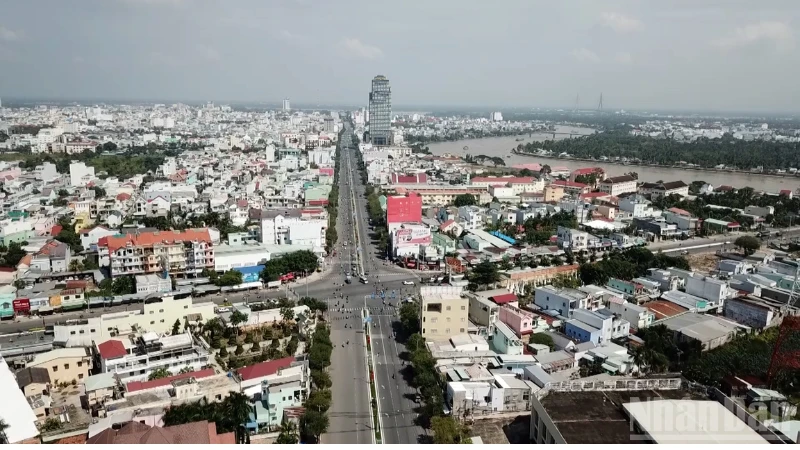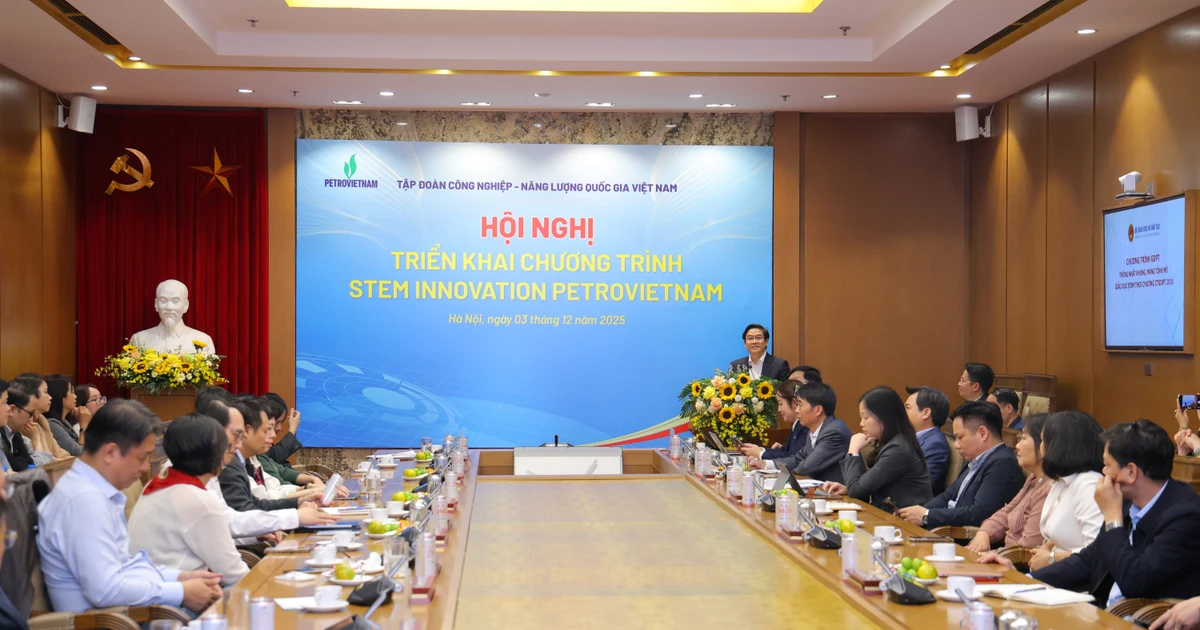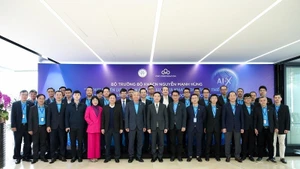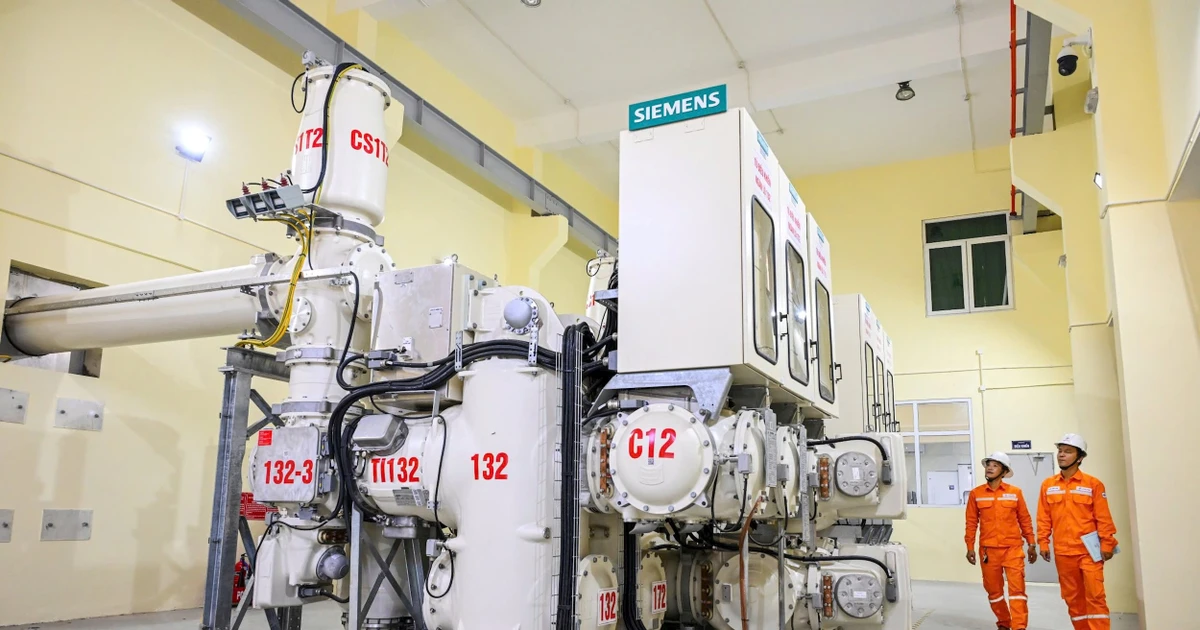Recently, CT Semiconductor, a member of CT Group, broke ground on the second phase of its ATP chip factory, marking the first semiconductor project in Viet Nam fully owned and developed by Vietnamese engineers. With a total investment of nearly 100 million USD, the plant is expected to reach a capacity of 100 million chips per year by 2027 and, notably, will produce the first “Made by Viet Nam” chip as early as 2025. The project reflects Viet Nam’s growing confidence in developing indigenous semiconductor capacity and marks an important step towards technology self-reliance.
A milestone in global integration
The groundbreaking of CT Semiconductor’s factory not only demonstrates the capability of Vietnamese enterprises but also marks an important milestone in Viet Nam’s integration into the high-tech supply chain. The country is emerging as a promising destination amid the global shift in semiconductor manufacturing.
This growing appeal is reflected in a series of major projects already under way. Notable examples include Intel’s 1.5 billion USD assembly and testing facility in Ho Chi Minh City, Samsung’s expanded memory chip production in Thai Nguyen, Amkor Technology’s 1.6 billion USD plant in Bac Ninh, and design centres established in Viet Nam by Synopsys and Marvell.
According to Dr. Bui Xuan Minh, Head of the Semiconductor Design and Industry 4.0 Research Group at RMIT University Viet Nam, escalating geopolitical tensions have prompted global companies to seek alternatives to China. Viet Nam is gradually emerging as a technological power, a transformation driven by one of the smallest yet most vital components in modern technology: the semiconductor.
Corporations such as Synopsys, Renesas, and Marvell are stepping up research and development (R&D) in fields ranging from medical devices to data centres. Among the cutting-edge technologies gaining attention are in-memory computing, which promises to drastically reduce energy consumption in AI hardware, and quantum chip development for applications in cryptography and pharmaceuticals. Design tools from companies such as Cadence, Synopsys, and Siemens are redefining speed and cost efficiency in chip production, creating opportunities for Viet Nam to make breakthroughs in the industry.
Viet Nam’s strongest advantage lies in its young, abundant, and adaptable workforce. Each year, domestic technical universities produce tens of thousands of engineers in electronics, telecommunications, and information technology, with an increasing number specialising in microchip design, microelectronics, and semiconductors. This foundation enables Viet Nam to move higher up the value chain and participate more deeply in global semiconductor ecosystems.
In addition, Viet Nam’s competitive labour and operational costs make it an attractive destination for global technology corporations, especially as many firms diversify production beyond China.
Beyond these natural advantages, Viet Nam holds a strategic position in Asia’s “semiconductor belt,” located between major technology hubs such as Taiwan (China), the Republic of Korea (RoK), and Singapore, and close to advanced ecosystems in Japan and Malaysia. This geographic positioning enables Viet Nam to easily join regional value chains and attract the international investment currently shifting across Asia.
Notably, the Government has shown strong determination by identifying semiconductors as a key national industry. Its goal of training 50,000 to 100,000 semiconductor engineers over the next decade demonstrates a long-term vision. Numerous international cooperation programmes, research funds, and innovation centres have been established to create an enabling environment for Vietnamese talent to meet global standards quickly.
According to official data, Viet Nam has so far attracted nearly 170 high-tech FDI projects from developed economies such as the US, the RoK, and Europe, while expanding strategic human resource partnerships with Japan and Taiwan (China).
A call for comprehensive policies
New initiatives, including about 20 national and institutional semiconductor laboratories and a 69 million USD advanced packaging lab in Da Nang, are laying a solid foundation for a competitive, innovative, and globally integrated ecosystem.
However, Dr. Minh noted that the sector currently focuses mainly on two areas: chip design and outsourced packaging, assembly, and testing. The absence of a domestic wafer fabrication plant remains a major limitation, restricting Viet Nam’s ability to move into higher-value segments such as advanced chip design and next-generation manufacturing. The country also faces shortages of highly skilled professionals, inconsistent research infrastructure, and inadequate specialised logistics, from stable power supplies to standardised chip-grade materials.
To compete effectively, Dr. Minh emphasised that Viet Nam needs not only capital investment but also comprehensive policies, a robust legal framework for intellectual property protection, and a fully integrated ecosystem to foster innovation. The Government must take a leading role by developing incentive policies and upgrading technical infrastructure.
In addition to tax incentives, subsidies, and funding for semiconductor manufacturing and R&D, Viet Nam should invest in building a national semiconductor fabrication plant. It must also enhance the reliability of its electricity, water, and logistics infrastructure to support high-tech production. Strong legal frameworks for intellectual property protection and technology transfer agreements with global giants such as TSMC will also be crucial.
In this context, domestic enterprises will play a central role in driving growth. Promoting partnerships between Vietnamese companies such as Viettel and FPT with global semiconductor leaders including Intel, Samsung, Cadence, Synopsys, and TSMC will accelerate knowledge transfer and technological advancement.
Education will also be a cornerstone of the industry’s development. Courses on integrated circuit design, microelectronics, and semiconductor physics should be integrated into academic curricula, alongside close cooperation between universities and businesses to produce a workforce ready to meet industry demands.
Looking towards 2050, Viet Nam’s semiconductor journey may not unfold as dramatically as other technological shifts, but it will be of critical importance. In this race, those tiny chips could become the driving force behind the nation’s digital future
Dr Bui Xuan Minh,
Head of the Semiconductor Design and Industry 4.0 Research Group at RMIT University Viet Nam
According to Vo Xuan Hoai, Deputy Director of the National Innovation Centre (NIC), the growing presence of international enterprises and organisations is a clear testament to Viet Nam’s commitment to building a world-class semiconductor ecosystem.
To realise this vision, the Government is implementing a series of decisive policies, boosting investment in R&D, expanding international cooperation, and focusing on high-quality workforce training. Viet Nam’s semiconductor industry revenue is projected to grow by an average of 11.6% annually through 2027. Beyond contract manufacturing, the country is now moving into integrated circuit design, assembly, testing, and advanced packaging, while preparing for the operation of its first semiconductor manufacturing plant.
Together with policy initiatives, new investment projects, expanded R&D centres, and international partnerships continue to strengthen Viet Nam’s position as a rising star on the global semiconductor map. The Government remains steadfast in promoting the “three-way partnership” model linking the State, academia, and enterprises, underscoring Viet Nam’s determination to achieve technological sovereignty and establish itself as a key player in the global semiconductor supply chain by 2027.




